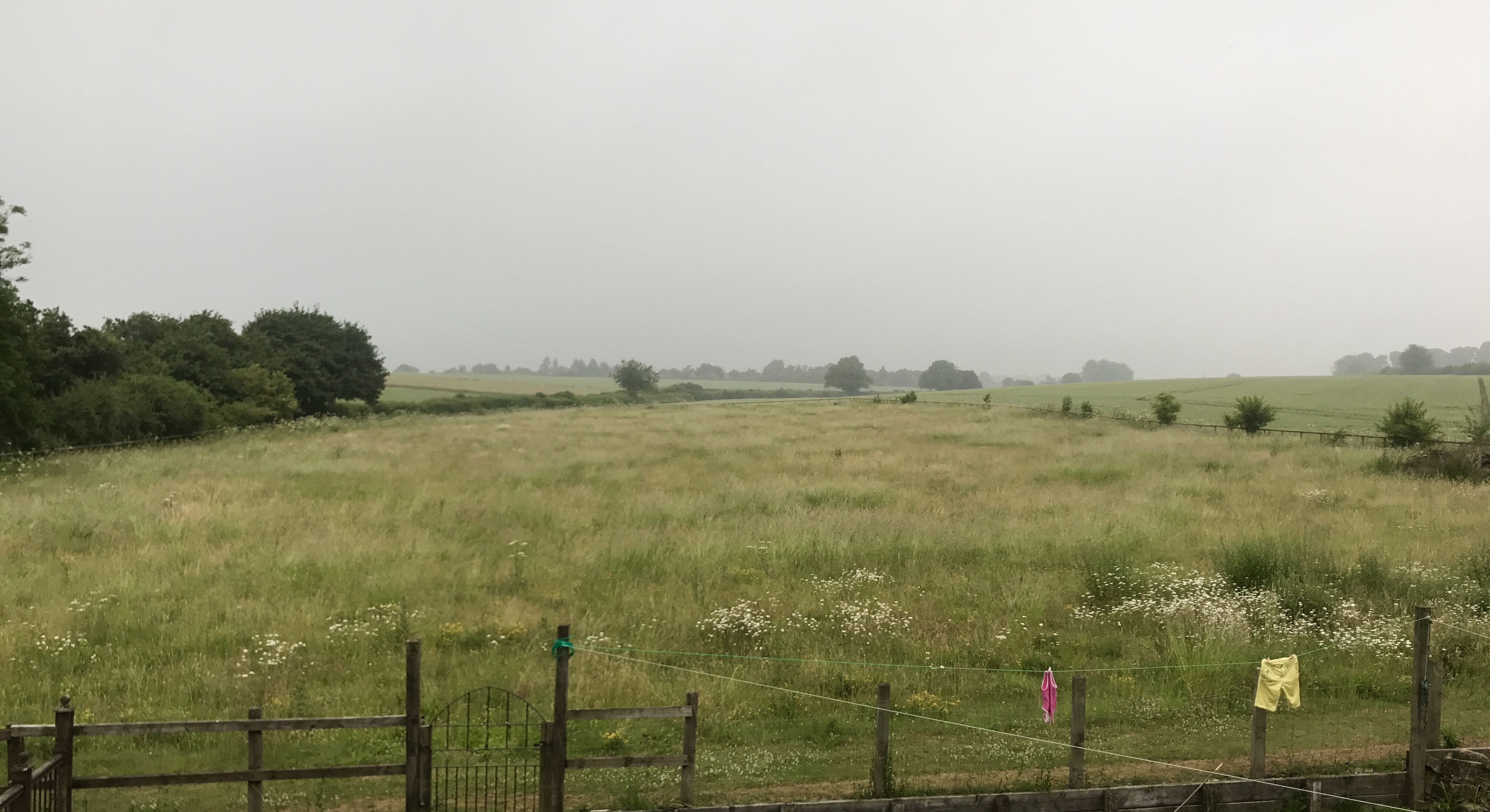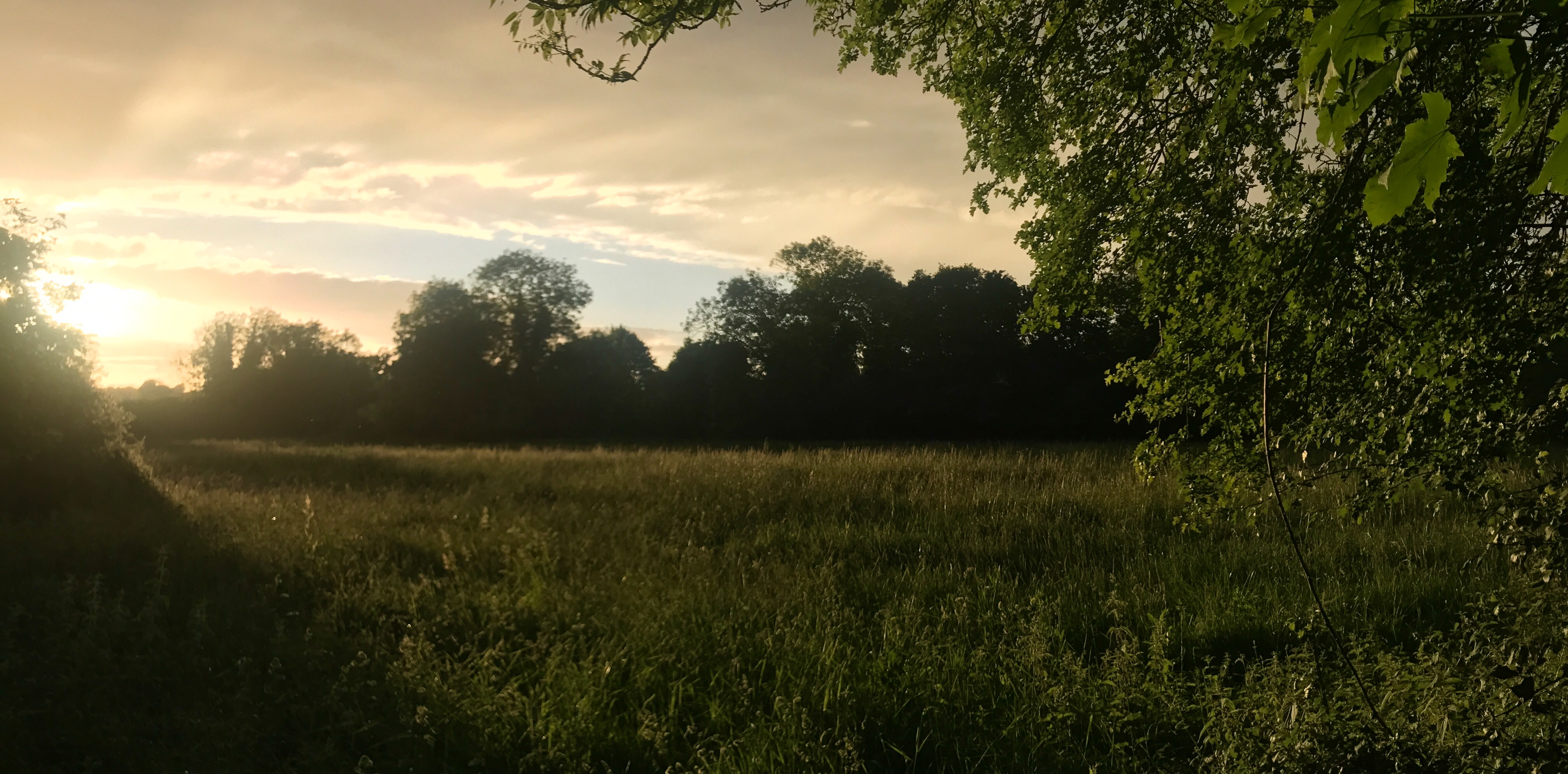This weather is just so wonderfully glorious! The absolute best of British and where else in the world would I rather be right now?

The Tribe are still in summer clothes, still rescuing rodents and just generally enjoying the outdoors while it is still warm and light – it will be a shock when the cooler weather does arrive and the nights really do draw in. But for now, we are making the most of it including eating outside. Despite the balmy temperatures, the white poplar has lost almost all its leaves and the silver birches are already dropping their yellowed leaves.
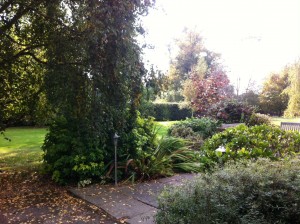
Looking out at this verdant landscape, it’s hard to imagine that the trees will be quite skeletal in a just a couple of months.
Today the Littlest and I took a walk to see if there were any blackberries left in the hedgerow around us (answer: not many), but also enjoyed looking at what was about in the field.
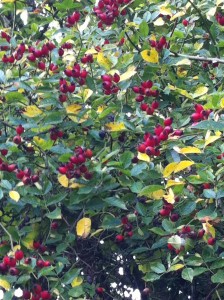
Rosehips from the dog rose, seem to be plentiful right now and I wonder if I’ll get myself organised to make any rose hip syrup this year. The hips are oval, hard and red – striking in the hedgerows.
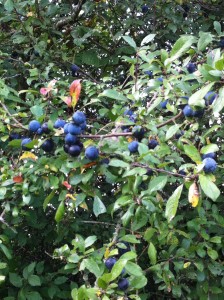
Sloes are also ripe for picking (they look like small, are plums), but the advice is to wait for the first frosts before picking them. Given that the sloes need to steep in the gin for at least two months, putting the sloes in the freezer is supposed to work just as well and will ensure the sloe gin is ready for Christmas! Sloes are the fruit of the blackthorn bush – very spiky thorns they have too, and not to be eaten raw as our Gerald Durrell did the other day! They are disgustingly bitter as she discovered.
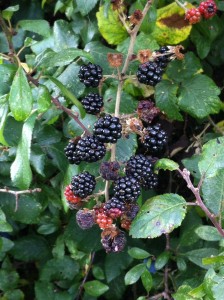
The blackberries, although no longer plentiful, are plump, glossy, black and delicious! I doubt that we’ll have enough to even make a small tart, but there are enough to keep a small person fed on our walk around the field.
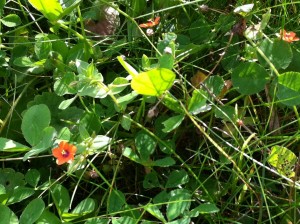
Walking around the field, I am pleasantly surprised to find a number of wild flowers still about. The Littlest finds a clump of low growing jewel-like, tiny scarlet flowers – scarlet pimpernel.
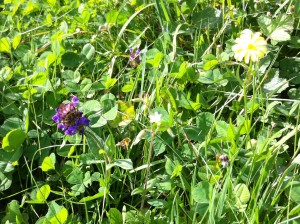
A clump of, what I believe to be, Selfheal, the vibrant purple flowers having caught the Littlest’s attention amidst the bright green leaves of clover. It can be used apparently to treat cuts as well as being good for curing sore throats – perhaps I will find out how to use it before the flowers disappear for the winter. We also find ribwort, the dying flowers of lady’s bedstraw, small thistles, knapweed and even daisies and more astonishingly, a couple of buttercups. I am sure that they stop growing midsummer.
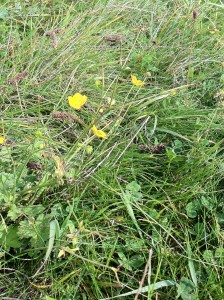
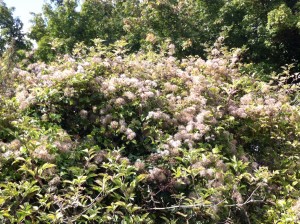
Traveller’s Joy has draped itself over trees and the hedgerow with cloud-like white tufts (hence its other name of Old Man’s Beard) on thick, strong stems. It is part of the clematis family and I have discovered that in New Zealand it is seen as an utter pest as it so vigorous, with 10m of growth in one season and 100,000 seeds from one plant, and can smother large areas of native forest – there is a warning on the New Zealand Government’s website with instructions of how to get rid of it. Father of the Tribe has decided that he will remove it from the hedgerow to protect the trees and shrubs.
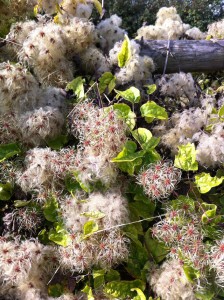
As we walk back to the house a flock of Canadian geese, in an impressive v-formation, fly overhead. With their rather melancholy honking, we hear them before we see them. I’m not sure if these geese are migrating to Southern Europe or just further south in the UK. They have certainly spent a lot of their time in the water meadows around the village during the summer and more recently have been landing in the harvested fields. With their black head and neck and white patches on their face they are easy to spot – if you don’t hear them first. They are unpopular with many landowners, but have in fact been in the UK since 1665 when King Charles I added them to his waterfowl collection in St James’ Park. At this time of year they are very much a part of British life and is another reminder that autumn is definitely on its way despite the warm temperatures.

